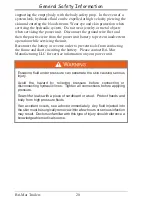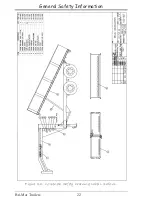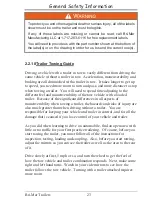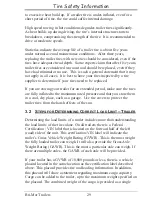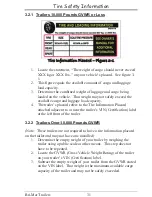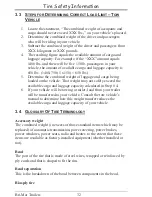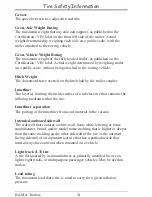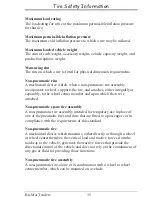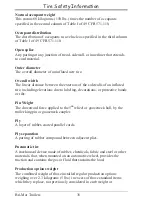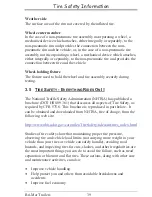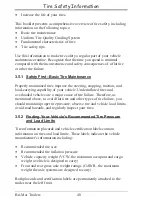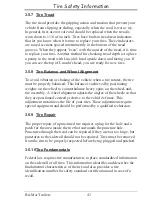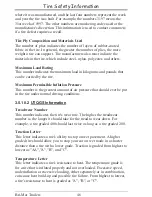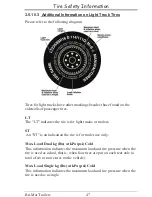
Tire Safety Information
Bri-Mar
32
3.3 S
TEPS FOR
D
ETERMINING
C
ORRECT
L
OAD
L
IMIT
–
T
OW
V
EHICLE
1.
Locate the statement, “The combined weight of occupants and
cargo should never exceed XXX lbs.,” on your vehicle’s placard.
2.
Determine the combined weight of the driver and passengers
who will be riding in your vehicle.
3.
Subtract the combined weight of the driver and passengers from
XXX kilograms or XXX pounds.
4.
The resulting figure equals the available amount of cargo and
luggage capacity. For example, if the “XXX” amount equals
1400 lbs. and there will be five 150 lb. passengers in your
vehicle, the amount of available cargo and luggage capacity is
650 lbs. (1400-750 (5 x 150) = 650 lbs.).
5.
Determine the combined weight of luggage and cargo being
loaded on the vehicle. That weight may not safely exceed the
available cargo and luggage capacity calculated in Step # 4.
6.
If your vehicle will be towing a trailer, load from your trailer
will be transferred to your vehicle. Consult the tow vehicle’s
manual to determine how this weight transfer reduces the
available cargo and luggage capacity of your vehicle.
3.4 G
LOSSARY
O
F
T
IRE
T
ERMINOLOGY
Accessory weight
The combined weight (in excess of those standard items which may be
replaced) of automatic transmission, power steering, power brakes,
power windows, power seats, radio and heater, to the extent that these
items are available as factory-installed equipment (whether installed or
not).
Bead
The part of the tire that is made of steel wires, wrapped or reinforced by
ply cords and that is shaped to fit the rim.
Bead separation
This is the breakdown of the bond between components in the bead.
Bias ply tire
Trailers
Summary of Contents for DT508LP
Page 144: ...Electrical Drawings Bri Mar 138 Trailers...
Page 145: ...Bri Mar 139 9 ELECTRICAL DRAWINGS Trailers...
Page 146: ...Bri Mar 140 Trailers...



